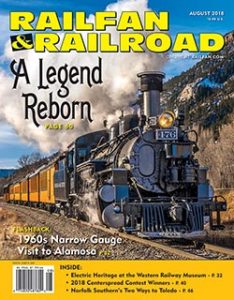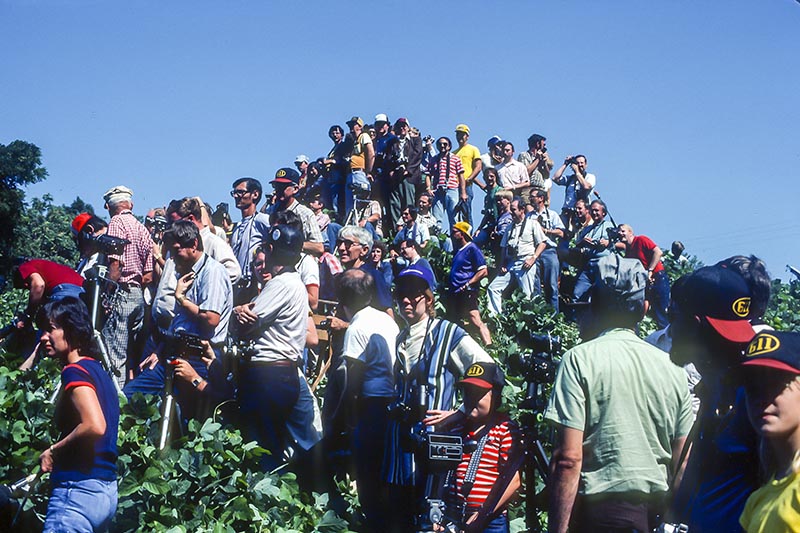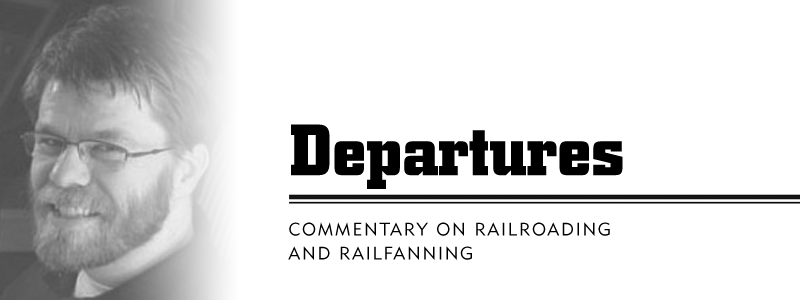 In this issue we’re showing the results from our annual Centerspread Contest, a friendly competition run for a little more than ten years. If you are a railfan who is also photographer, such contests can be a healthy challenge, a way to push yourself and your work to new levels. There are only a few such contests out there, of course, so if you are interested in sharpening your creative focus, you may want to consider alternative ways to challenge yourself.
In this issue we’re showing the results from our annual Centerspread Contest, a friendly competition run for a little more than ten years. If you are a railfan who is also photographer, such contests can be a healthy challenge, a way to push yourself and your work to new levels. There are only a few such contests out there, of course, so if you are interested in sharpening your creative focus, you may want to consider alternative ways to challenge yourself.
Consider, for a start, railfan photography. I don’t mean photos of trains and railroads here; I mean photos of other railfans. Think about it for a moment — how many times has your planned photo been “ruined” because fellow fans were standing in the way trying to get their own shots? Now you could be like the late Jim Boyd, one-time editor of this magazine, who would carefully shepherd those fans into an orderly photo line, but that seems like such a straightforward (read: unchallenging) solution. Instead, try to work in your fellow fans, or even ignore the train altogether, and start making portraits of your companions.
Newer technologies are also an abundant source of challenges. Consider drone photography. Thanks to these small, remote-controlled flying machines, it is possible to position a camera almost anywhere. Why not combine this with human subjects, and make drone-mounted portraits? The opportunities for crowd shots are immense. More people, more visual interest!

Tired of taking yet another boring train photo? Consider turning the camera on your fellow fans! This mountain of humanity was waiting for the arrival of Norfolk & Western 611 at Lynchburg, Va., in September 1982. Steve Barry photo
If people aren’t your thing, how about deploying drones in different ways. Example: Pacing shots. Use a drone to match the engine speed and get that super-cool shot with the locomotive in focus and the landscape all blurred.
Don’t like high tech? Are you crafty, or a hipster? Or just a hoarder? Consider building your own pinhole camera. You only need some photo paper, a convenient old box, some electrical tape, some tin foil, and a pin. With a pinhole, exposures last for long periods, sometimes hours, so be sure to point your camera at something really busy, and be okay with explaining the black blur in your image was really a Norfolk Southern train.
For the truly avant garde, take the pinhole concept and make it big, by building your own camera obscura. The forerunner of all cameras, the camera obscura is basically a pinhole camera made out of an entire, light-sealed room. The pin lens is a small hole in, say, the door, and the image is projected (flipped and inverted) on the opposite wall. You could probably build one out of a plastic garden shed, hauling it trackside in a pickup truck.
There are downsides. It takes time to set up. Also, it might attract attention, and since you will be inside the camera, you’ll see the approaching Homeland Security agents who are trying to figure out the purpose of this mysterious new box next to the tracks. Also, it’s not possible to get a digital sensor (or a piece of film) big enough to permanently capture the image, so think of it less as photography, and more as an artistic experience. And if you want to enter your photo into our Centerspread Contest next year? Maybe you can invite one of the editors to come join you in the box. I mean, who doesn’t enjoy conceptual art?
—Consulting Editor ALEXANDER BENJAMIN CRAGHEAD is a transportation historian, photographer, artist, and author.



